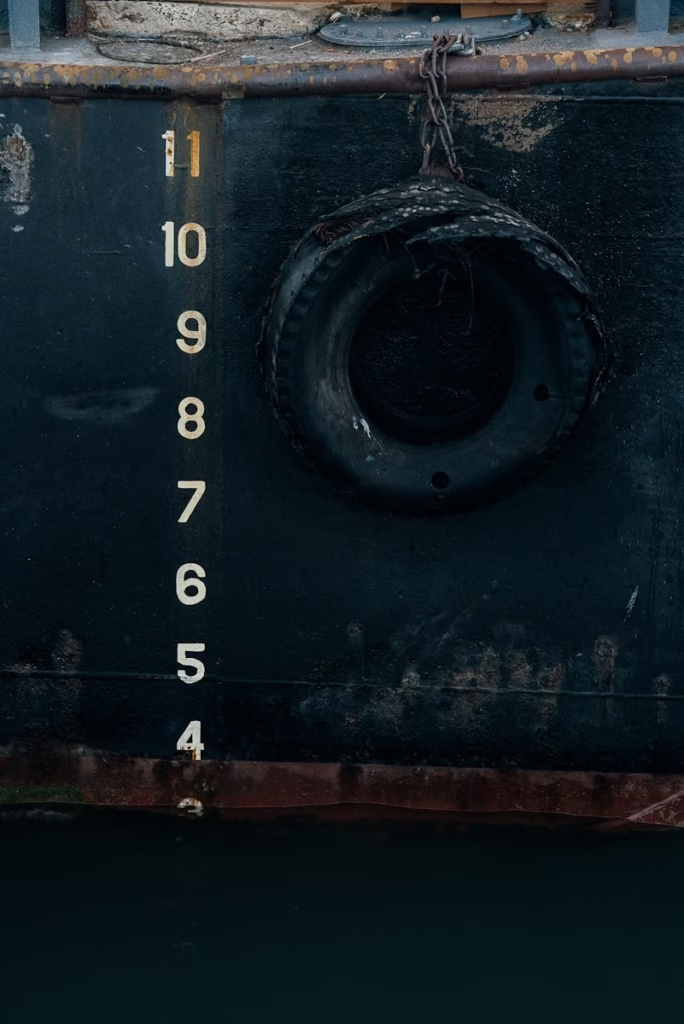Tide gauges are essential instruments used to measure changes in water level with respect to a fixed vertical datum. By recording variations in sea level during high and low tides, these devices play a critical role in hydrographic surveying and are also referred to as marigraphs or sea-level recorders. In this article, we’ll explore the different types of tide gauges, their working principles, and their applications.

Types of Tide Gauges
Tide gauges are broadly classified into two main categories based on their operational methods:
- Non-recording type tide gauges: Require manual observation for data collection.
- Recording type tide gauges: Automatically record water level changes over time.
Non-Recording Type Tide Gauges
Non-recording tide gauges necessitate manual observation to note water level readings periodically. These gauges are further divided into three sub-types:
- Staff Gauge
A staff gauge is a simple device consisting of a vertically positioned board, graduated with measurements for water levels. Typically, the board is 150 to 250 mm wide and 100 mm thick. Heights are marked with a least count of 5 to 10 cm, and the gauge is installed at a location with a known elevation. During operation, the observer directly notes the water level by visually aligning it with the markings on the staff gauge. This straightforward design makes it an effective choice for measuring water levels in situations where precision and automation are not priorities. - Float Gauge
The float gauge incorporates a more advanced design, featuring a wooden box with a square section (300 mm x 300 mm). Inside this box is a float connected to a graduated vertical rod. Water enters the box through holes at the bottom, causing the float to rise with the water level. The observer notes the reading on the graduated rod through a slit window. Float gauges are particularly useful in conditions with high tidal intensity or when water levels fluctuate significantly, as they are easier to read than staff gauges. - Weight Gauge
Weight gauges come in two variants:- Chain Gauge: Comprising a horizontal graduated scale, a chain, and a weight, this gauge measures water level by lowering the weight until it touches the water surface. Observations are taken from the graduated scale aligned with the chain’s index mark.
- Wire Gauge: In this type, a cable or wire wound onto a graduated reel replaces the chain. The wire moves over a pulley, and readings are taken from the reel’s graduation.
Recording Type Tide Gauges
Unlike non-recording gauges, recording tide gauges automatically log water level changes over time. These self-registering devices offer significant advantages in convenience and accuracy.
- Structure and Components
A typical recording tide gauge includes:- A float connected to a wire or cable.
- A wheel equipped with a gear system to scale down readings.
- A recording mechanism comprising a pencil and graph paper mounted on a rotating drum.
- Functionality
As water levels rise or fall, the float moves, transmitting the motion through the wire to the wheel. The gear system reduces the scale of the movement, which is then recorded on graph paper by the pencil. The drum rotates at a constant speed, usually completing one full revolution in a day, ensuring continuous and accurate data recording. - Applications and Advantages
Recording tide gauges are invaluable for long-term monitoring of sea levels, making them critical tools in environmental studies, oceanography, and coastal management. Their automated nature eliminates the need for manual observation, providing consistent and reliable data.
Conclusion
Tide gauges, whether non-recording or recording, serve as indispensable tools for measuring and monitoring water levels. Non-recording gauges like the staff, float, and weight types are suited for simpler applications requiring manual intervention, while recording gauges offer advanced capabilities for continuous monitoring and data analysis. As sea-level monitoring becomes increasingly important for environmental and scientific research, tide gauges continue to play a vital role in understanding our oceans and safeguarding coastal regions.
